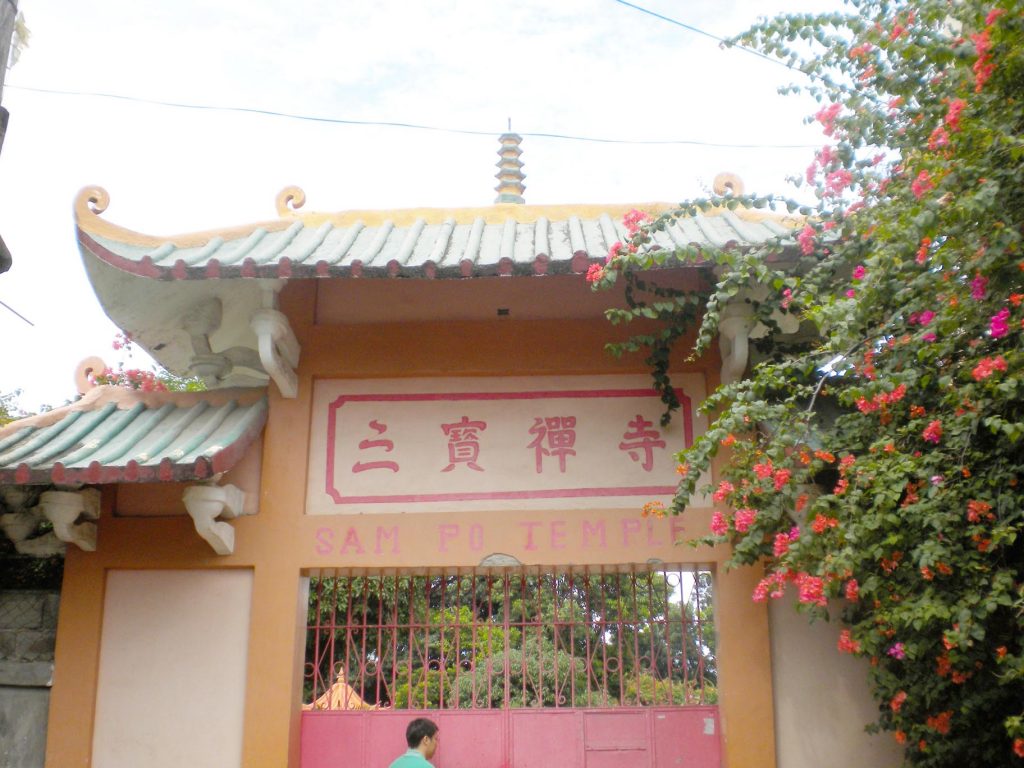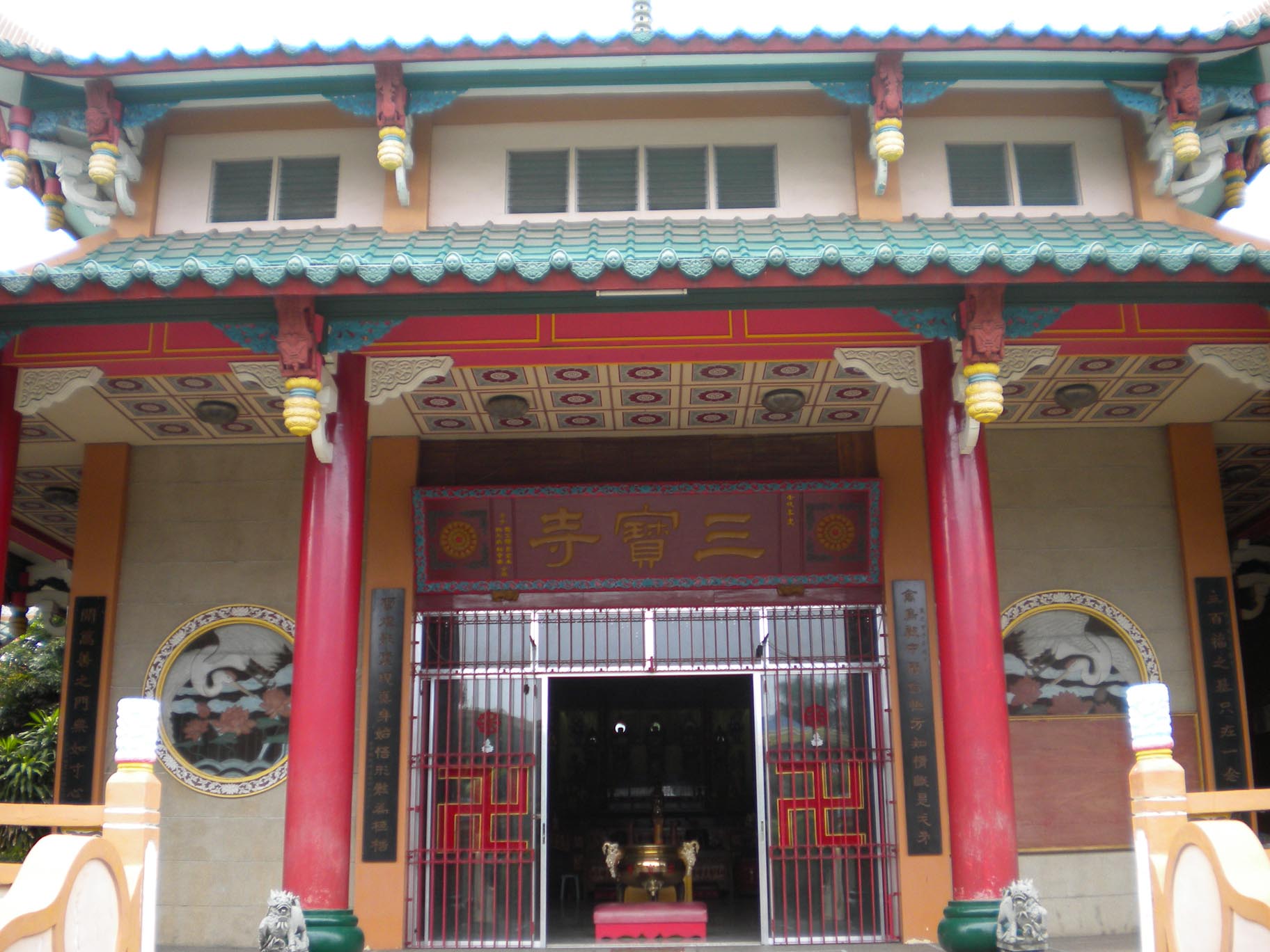Editors Note: This is the 36th and final installment of a series about the 36 Chinese Buddhist temples of the Philippines. Much of the information is from a thesis of Venerable Chuanmiao (Hsuan Chuang University, 2008), a Buddhist monk affiliated with the Thousand Buddha Temple in Quezon City.
36. Sam Po Temple 三寶寺
Canelar Street, Caburihan, Zamboanga City
Tel. (062) 991-1367
A Taoist shrine known as the Shenjiao Miao (神教廟) has existed on the temple’s site prior to the 1950s (exact year unknown).
Chuanhai (傳海) arrived in Zamboanga in 1958 together with Chuanguan (傳貫) to staff the Hoc Chuan Temple (福泉寺). In 1960, Sam Po’s board of directors asked him to take charge of the Sam Po Temple, and he accepted.
In 1983, the temple buildings were renovated and the Taoist hall was renamed the Bao An Gong (保安宮). Chuanhai left the temple in 1990 and moved to the Seng Guan Temple in Manila. From then until 1997, no monastics resided at the temple and the board of directors maintained the place.
In 1997, the board invited Jiejin (界進) from the Thousand Buddha Temple, Quezon City, to become abbot.
Jiejin was born in a Hokkien-speaking village in Wenzhou in 1958. He renounced at the age of 31 and was ordained at 34.
In 1994, aged 37, he accepted the invitation to assist at the Thousand Buddha Temple. As abbot at Sam Po Temple, he improved the environment by sprucing up the garden, creating a pond, and personally sculpting large outdoor statues of Guanyin and Maitreya.

Main buildings. The temple complex is not easy to find. The entrance is in a cul-de-sac not visible from the main road, and the gate opens to the side of the garden. The three temple buildings are immediately to the right of the gate.
The three buildings are neatly arrayed, of similar size, and face the garden. The first one has the ancestral hall, refectory, and living quarters. In the center is the Buddha hall where the three Buddhas are enshrined. The third is the Taoist hall.
Leadership and primary activities. Jiejin lives alone in the temple and manages all affairs by himself, including housekeeping.
He leads the chanting services by himself, and has trained some lay devotees to use the musical instruments. Food is brought to the temple for feast days.
The main devotion days observed are the first and 15th of the lunar month, feast days of Guanyin, birthday of the Buddha, and seventh month chanting of Ksitigarbha’s vows.
The temple has attracted some new immigrants from China, many of whom spend Sunday afternoons chatting with Jiejin. — First published in Tulay Fortnightly, Chinese-Filipino Digest 26, no. 4 (July 23-Aug. 5, 2013): 12-13.
